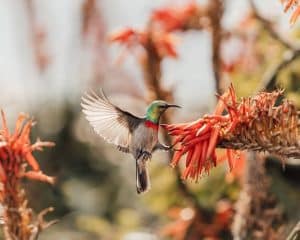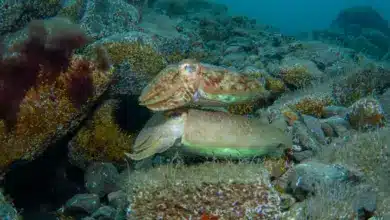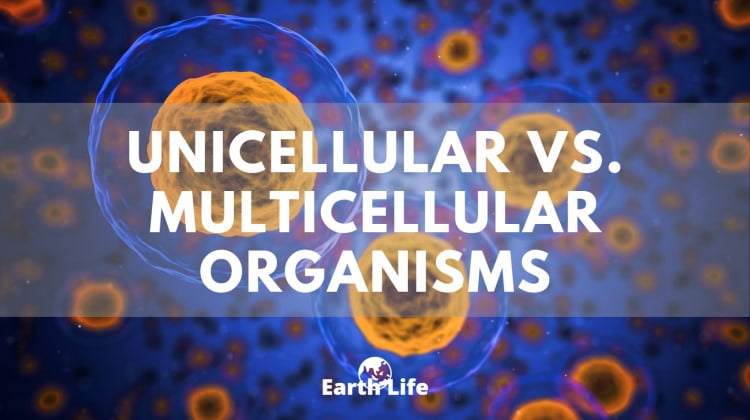Most Important Pollinators On Our Planet
Pollinators are essential for plant reproduction and food crop production worldwide. Around 75% of flowering plant species rely on animal pollination services for reproduction. Below we explore some of the most significant pollinators on the planet.
Bees
Bees are the most well-known pollinators, with over 20,000 species worldwide specializing in pollen collection and transfer.
Honey Bees
Honey bees (Apis mellifera) are the most widespread managed pollinators. Hives are transported across the country to pollinate crops.
They pollinate $15 billion worth of US crops like apples, almonds, blueberries, cherries, squash, and cucumbers.
Honey bee populations have declined due to factors like colony collapse disorder, mites, disease, and pesticides. This threatens agricultural output.
Conservation efforts like habitat protection, supplemental feeding, and pest management aim to support healthy honey bee colonies.
Bumblebees
There are over 250 bumblebee species. They are essential pollinators for tomatoes, blueberries, and other greenhouse crops.
Bumblebees perform “buzz pollination” by grabbing the flower and rapidly vibrating their wing muscles, dislodging pollen.
Declines in bumblebees have been caused by disease spillover from commercial bees and habitat loss. Providing native flowering plants boosts wild bumblebee colonies.
Solitary Bees
Unlike social colony bees, solitary bees nest alone in tunnels in soil, wood, or stems. There are over 300 solitary bee species in California alone.
Small solitary bees are efficient pollinators for crops like almonds, apples, squash, and blueberries. Their solitary nature limits disease transmission.
Protecting undisturbed soil areas and maintaining natural nesting sites supports these important native pollinators.
Stingless Bees
Stingless bees are tropical species that lack stings. The iridescent blue-green Trigona bees are key pollinators in Central America.
They perform buzz pollination and transport pollen in unique ways. Melipona bees pollinate greenhouse tomatoes and other crops.
Providing suitable nesting boxes and habitat protects threatened stingless bee populations.
Butterflies and Moths
Butterflies and moths make up the order Lepidoptera. There are over 180,000 species globally that pollinate as they drink nectar.
Monarch Butterflies
The iconic monarch butterfly (Danaus plexippus) is well-known for its epic annual migrations across North America.
Monarchs spread milkweed and wildflower pollen during their seasonal movements. Milkweed serves as the obligate host plant for their caterpillars.
Securing migratory pathways and planting milkweed provide essential food sources and habitat for monarchs.
Swallowtail Butterflies
Swallowtails are large, colorful butterflies common across North America, Europe, and Asia.
Species like the eastern tiger swallowtail (Papilio glaucus) pollinate wildflowers. The European swallowtail pollinates carrots, fennel, and other herbs.
The birdwing swallowtail of the tropics has declined due to rainforest habitat loss. Planting citrus and spice plants can aid its recovery.
Sphinx Moths
Sphinx moths, also called hawk moths, are important nighttime pollinators of flowers with tubular blossoms like petunias, jimson weed, and tobacco.
They drain nectar from deep flowers using a long proboscis tongue. Pollen sticks to their fuzzy bodies for transport between plants.
Providing suitable flowers in gardens and minimizing light pollution helps sustain sphinx moth populations.
Luna Moths
Luna moths (Actias luna) are pale green, swallow-tailed North American silk moths. Their elegant tails and lime green coloration make them one of the most beautiful moths.
Luna caterpillars feed on walnut, hickory, sumac, and other deciduous trees that they help pollinate as adults.
Beetles
With over 400,000 species globally, beetles are extremely ecologically diverse. Many specialize in pollination.
Flower Beetles
Flower beetles or flower scarabs (Cetoniinae) feed on pollen and petals. They are found worldwide pollinating many plants.
Species like the hairy flower scarab and bumblebee scarab are important pollinators in North America of goldenrods, milkweeds, and other native plants.
Protecting meadow habitats with diverse flowers supports these and other flower beetles.
Scarab Beetles
Scarab beetles pollinate ancient cycad plants. The rhinoceros beetle pollinates oil palms in tropical regions.
Some scarabs have symbiotic bacteria that produce chemicals that specifically attract cycads, demonstrating an intricate coevolved relationship.
Preventing overharvesting of scarab species for the pet trade helps maintain cycad pollination.
Metallic Wood-Boring Beetles
These tropical beetles have brilliant metallic green, blue, and purple colors. Different patterns likely help attract certain flowers.
As adults they pollinate magnolia, hibiscus, ginger, and other tropical flowers, trees, and herbs that their larvae feed on as they develop.
Conserving rainforest habitats protects exotic metallic wood-boring beetles and their specialized pollination services.
Flies
Though overlooked, flies are valid pollinators for thousands of plants globally. There are over 120,000 flower fly species alone.
Hoverflies
Hoverflies mimic the appearance of wasps and bees as a form of defense against predators, but they do not sting. Their deception masks an important pollination role.
Species like the syrphid fly are significant crop pollinators for vegetables like onions, carrots, and tomatoes.
Female hoverflies require moist environments to lay their eggs. Protecting wetlands provides essential habitat.
Carrion Flies
Carrion flies like blowflies and flesh flies pollinate deep red flowers like wild ginger that smell of rotting meat. The flowers mimic the stench of dead animals to attract the flies.
As the flies move from one fetid flower to the next feeding on nectar, they pick up and deliver pollen. Supporting carrion fly conservation efforts could boost pollination success for these unusual plants.
Tangle-veined Flies
Tangle-veined flies in South Africa and Australia are amazing examples of co-evolution between highly specialized plants and pollinators.
Some species have straw-like mouthparts over 5 inches long used to drink nectar from extremely long tubed foxglove flowers while pollinating them.
Protecting the fynbos and kwongan shrubland habitats these plants and pollinators rely on is crucial for their survival.
Birds
Birds like hummingbirds, sunbirds, and honeycreepers provide essential pollination services, especially in tropical climates.
Hummingbirds
Hummingbirds are a keystone pollinator in North America for wildflowers and crops like bananas, agave, and mangos.
Their long, specialized beaks allow them to drink nectar from tubular blossoms. Rapid wingbeats enable precise hovering in place.
As hummingbirds move between flowers, pollen attaches to their heads and beaks and transports to other plants. Planting native flowers provides vital food to support hummingbird conservation.
Sunbirds
Sunbirds fill an Old World niche similar to hummingbirds, pollinating protea, aloe, and other African and Asian flowers.
Their thin curved beaks and tongues are adapted to nectar-feeding. Bright iridescent plumage likely helps attract certain flowers.
Oil-producing protea flowers provide energy-rich nectar to sustain rapid sunbird metabolisms. Protecting the protea scrub habitat is essential.
Honeycreepers
Honeycreepers are small, brightly colored songbirds endemic to Hawaii. Many species are endangered.
Their curved beaks perfectly match the lobelioids they pollinate. The striking scarlet Hawaiian honeycreeper pollinated ohia trees.
Preventing habitat loss and promoting forest restoration are key to honeycreeper conservation.
Bats
Bats pollinate hundreds of plant species, especially in tropical regions. They transport pollen in their fur.
Fruit Bats
Large fruit bats like flying foxes in Asia and Australia are essential long-distance pollinators of trees like durian, figs, and eucalyptus.
Their ability to fly far nightly in search of food allows cross-pollination between isolated plants and orchards.
Loss of roosting sites and foraging habitat threatens many fruit bat species. Protecting migration corridors aids conservation.
Nectar Bats
Specialized nectar bats like the lesser long-nosed bat pollinate agaves, morning glories, and cacti in the desert southwest.
Their long snouts and tongues allow them to delve into flower blossoms and extract nectar. Providing suitable desert habitats with suitable flower resources can sustain these important pollinators.
Flower Bats
The critically endangered Cuban flower bat is the main pollinator for bellflowers, cacti, and other Cuban forest vegetation. They disperse seeds through their droppings as well.
Their specialized ecological role makes them a keystone species. Only 1500 individuals remain due to habitat loss.
Urgent conservation action including wetland and roost site protection is needed to prevent their extinction.
Most Peculiar Pollinators
Beyond insects, birds, and bats, many surprising animals contribute specialized pollination services. Here we explore some of the most peculiar pollinators and their ecological roles in detail:
Lemurs
Lemurs in Madagascar provide essential pollination for many unique island plants. Around 20 species of lemur have been observed feeding on nectar and pollinating flowers. The black and white ruffed lemur seeks out nectar from flowers of the traveler’s palm, Madagascar’s national tree.
As it laps up the nectar, pollen grains stick to its snout and face and transport to other palms facilitating pollination. Several species also pollinate the distinctive octopus tree, Alluaudia ascendens. The lemurs crawl along its spiny succulent branches feeding on its waxy flowers, transferring pollen between individual trees.
Unfortunately, extensive deforestation has made many lemurs endangered and in turn, threatened the plants they pollinate. Habitat conservation efforts are crucial for sustaining these specialized pollination interactions.
Colugos
Colugos, also known as flying lemurs, are fascinating gliding mammals from Southeast Asia. Despite their name, they are not related to lemurs but have evolved membranous flaps between their limbs that allow them to glide between trees to find sap and nectar.
The Sunda colugo laps nectar from flowers of cocoa, durian, and kapok trees, making it an important pollinator. As it travels through forest canopies its fur picks up pollen grains that brush off on the next blooms it visits.
Likewise, the giant flying squirrel in China frequents pine flowers at night, feeding on pine pollen and inadvertently transporting pollen among trees. Fragmentation of forest habitats threatens these arboreal pollinators.
Providing wildlife corridors between isolated forest patches and limiting deforestation could help colugos, squirrels and other gliding mammals access more trees to pollinate.
Rodents and Primates
Various rodents and primates also provide incidental pollination. In the Amazon rainforest, kinkajous visit fig trees at night to lap up fig juice and pollinate fig flowers in the process.
Likewise, squirrels act as occasional pollinators for oak, hazel, and assorted trees they feed on. Capuchin monkeys have been observed gathering pollen from flowers of the squash family, likely spreading it inadvertently between plants.
Tiny pygmy marmosets trek long distances through Costa Rican rainforests foraging on sap and nectar. As they move between isolated trees, they can transport pollen on their fur and paws. But habitat loss threatens these mobile pollinators.
Protecting migration corridors and areas of interconnected habitat can help arboreal mammals access resources across vast distances to facilitate crucial cross-pollination between isolated trees and plant populations.
Geckos and Anoles
Tropical lizards visit flowers not for nectar, but to hunt insect prey attracted to blossoms. Nonetheless, geckos and anoles end up transferring pollen between plants. Geckos have been observed frequenting pineapple and banana flowers to feed on nectar-sucking insects and spiders.
As they crawl onto multiple flowers stalking bugs, pollen clings to their skin and gets carried along to other blooms. Anolis lizards display similar behaviors on hibiscus, papaya, and other tropical flowers as they hunt.
Though not purposeful pollinators, lizards contribute to crop pollination success in tropical regions. Providing a habitat with suitable flowers that attract insect prey could help sustain these unusual pollinators and their inadvertent pollination services.
Tortoises and Terrapins
Reptiles like tortoises and terrapins also serve as infrequent pollinators. The Seychelles Islands host giant Aldabra tortoises imported in the 1800s. As the tortoises slowly wander grazing on vegetation, they spread seed and pollen across the islands between isolated plant populations and fragmented habitats.
Their plodding mobility connects plants otherwise too distant for pollinators like birds or insects to traverse. Aquatic river terrapins similarly transport pollen when they emerge from wetlands to bask.
As they crawl onto grassy banks they pick up pollen from flowers and carry it to the next verdant patch they visit.
Their amphibious nature allows them to connect isolated wetland plant communities separated by expanses of dry land. Protecting vital connectivity corridors aids reptiles in maintaining crucial gene flow for plants.
Mosquitos
Mosquitos are better known for biting than pollinating, yet they fill an important ecological role. Mosquitos drink nectar from flowers to acquire the energy needed for breeding. In the process, they frequently pick up pollen grains on their legs and long proboscis and transport them to the next flower they visit.
Male mosquitos that don’t bite are solely nectar feeders, making them more effective pollinators. Mosquitos aid in the pollination of many wetland trees and orchids worldwide like jimsonweed, goldenrod, magnolias, and rare lady slipper orchids. One orchid species in Madagascar can only be pollinated by a single mosquito species.
Unfortunately, mosquito habitat like wetlands and swamps has declined considerably, threatening specialized mosquito pollinators. Conservation efforts to protect wetlands could safeguard important mosquito biodiversity and their pollination contributions.
Beetles
While beetles are common pollinators, some bizarre species take part in unusual pollination relationships. Sphinx beetles act as underwater pollinators, climbing into aquatic flowers near riverbanks to feed on nectar and inadvertently transporting pollen between blossoms.
Some dung beetles also visit exotic foul-smelling flowers that spread the scent of feces, like the stinking corpse lily. The beetles likely spread these rare plants’ pollen under the false impression they are visiting animal feces.
By protecting complex habitats with diverse resources, from wetlands to rainforests, we may aid little-known specialist beetles with unusual life cycles that provide hidden pollination services.
Butterflies
Butterflies are beautiful pollinators, but some species take part in rare pollination relationships. Brilliant blue morpho butterflies pollinate tropical forest canopy trees and epiphytes rarely visited by other pollinators. Their shimmering iridescent wings likely attract the shadowy blooms high in the forest roof.
In northern climates, the silver-washed fritillary feeds on tree sap and occasionally visits spring wildflowers near its woodland habitat, inadvertently pollinating violets, primroses, and other understory plants.
Conservation of wooded areas and limiting deforestation protects plants reliant on reclusive butterfly pollinators that rarely venture into open environments far from the seclusion of forests.
Slugs and Snails
Slugs and snails aren’t viewed as pollinators, yet they provide incidental pollination through fortuitous circumstances. Slugs deposit pollen on their slimy mucus trails while moving between mushrooms, lichens, and mosses, inadvertently allowing cross-pollination.
Some slugs even aid tiny microscopic organisms – certain slug trails support algae and protozoans that use the sticky mucus strands like highways to spread between lichen-covered rocks and logs. The unpleasant slime likely protects the pollen or other microorganisms as they slowly disperse.
Conservation of mossy, lichen-covered old-growth environments may help sustain slug diversity and their inadvertent pollination of diminutive obscure organisms in overlooked forest niches.
Conclusion
Pollinators encompass a diverse array of species from butterflies to beetles, birds, bats, and beyond. While certain pollinators like bees, hummingbirds, and sphinx moths are widespread and provide generalist pollination services, many specialized or obscure animals engage in peculiar pollinator relationships that have coevolved over millennia.
Lemurs in Madagascar, colugos in Southeast Asia, mosquitos in wetlands, slugs in forests, and many other surprising creatures all support plant reproduction through intentional or unintentional pollinator services. These lesser-known pollinators fill specific ecological niches, forming intricate dependencies with certain plants.







